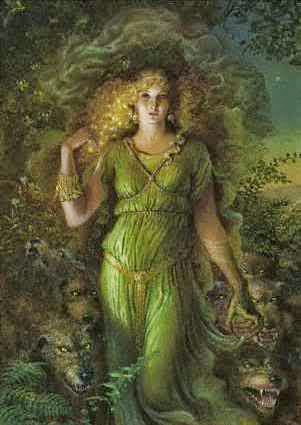Origins of Celtic Language
Celtic speech had early lost the initial p of old Indo-European speech, except in words beginning with pt and, perhaps, ps. Celtic pare(Lat. præ) became are, met with in Aremorici, "the dwellers by the sea," Arecluta, "by the Clyde," the region watered by the Clyde. Irish athair, Manx ayr, and Irish iasg, represent respectively Latin pater and piscis. P occurring between vowels was also lost, e.g.Irish caora, "sheep," is from kaperax; for, "upon" (Lat. super), from uper. This change took place before the Goidelic Celts broke away and invaded Britain in the tenth century B.C., but while Celts and Teutons were still in contact, since Teutons borrowed words with initial p, e.g. Gothic fairguni, "mountain," from Celtic percunion, later Ercunio, the Hercynian forest. The loss must have occurred before 1000 B.C. But after the separation of the Goidelic group a further change took place. Goidels preserved the sound represented by qu, or more simply by c or ch, but this {15}was changed into p by the remaining continental Celts, who carried with them into Gaul, Spain, Italy, and Britain (the Brythons) words in which q became p. The British Epidii is from Gaulish epos, "horse," which is in Old Irish ech (Lat. equus). The Parisii take their name from Qarisii, the Pictones or Pictavi of Poictiers from Pictos (which in the plural Pidi gives us "Picts"), derived from quicto. This change took place after the Goidelic invasion of Britain in the tenth century B.C. On the other hand, some continental Celts may later have regained the power of pronouncing q. In Gaul the q of Sequana(Seine) was not changed to p, and a tribe dwelling on its banks was called the Sequani. This assumes that Sequana was a pre-Celtic word, possibly Ligurian.25 Professor Rh[^y]s thinks, however, that Goidelic tribes, identified by him with Cæsar's Celtæ, existed in Gaul and Spain before the coming of the Galli, and had preserved q in their speech. To them we owe Sequana, as well as certain names with q in Spain.26 This at least is certain, that Goidelic Celts of the q group occupied Gaul and Spain before reaching Britain and Ireland. Irish tradition and archæological data confirm this.27 But whether their descendants were represented by Cæsar's "Celtæ" must be uncertain. Celtæ and Galli, according to Cæsar, were one and the same,28 and must have had the same general form of speech.
The dialects of Goidelic speech—Irish, Manx, Gaelic, and that of the continental Goidels—preserved the q sound; those of Gallo-Brythonic speech—Gaulish, Breton, Welsh, Cornish—changed q into p. The speech of the Picts, perhaps connected with the Pictones of Gaul, also had this p sound. Who, then, {16}were the Picts? According to Professor Rh[^y]s they were pre-Aryans,29 but they must have been under the influence of Brythonic Celts. Dr. Skene regarded them as Goidels speaking a Goidelic dialect with Brythonic forms.30 Mr. Nicholson thinks they were Goidels who had preserved the Indo-European p.31 But might they not be descendants of a Brythonic group, arriving early in Britain and driven northwards by newcomers? Professor Windisch and Dr. Stokes regard them as Celts, allied to the Brythons rather than to the Goidels, the phonetics of their speech resembling those of Welsh rather than Irish.32

